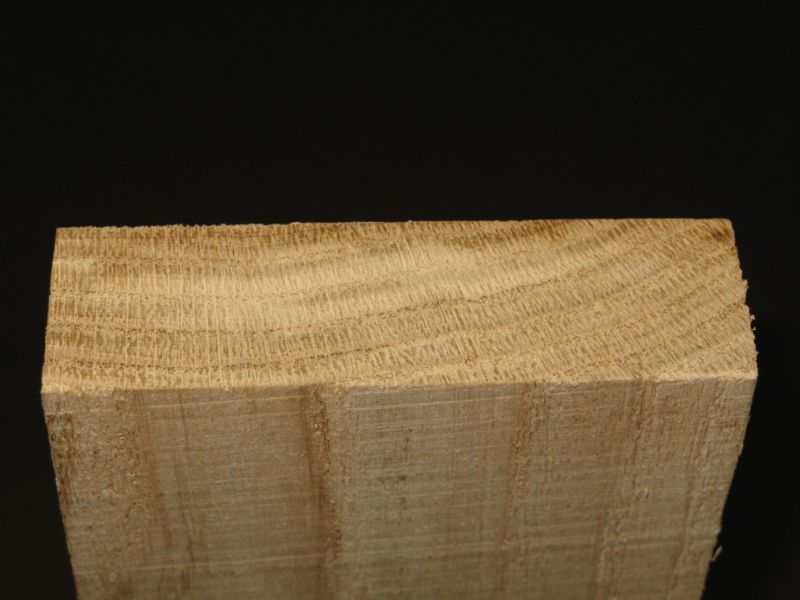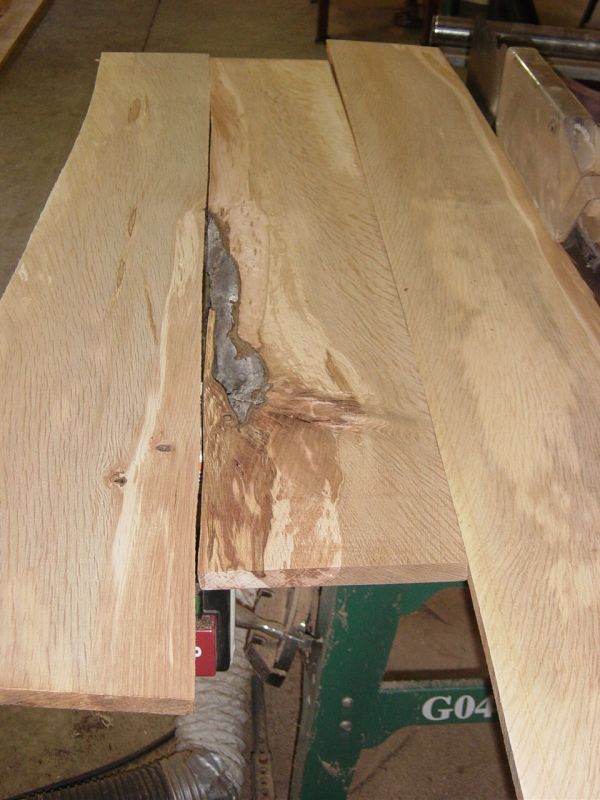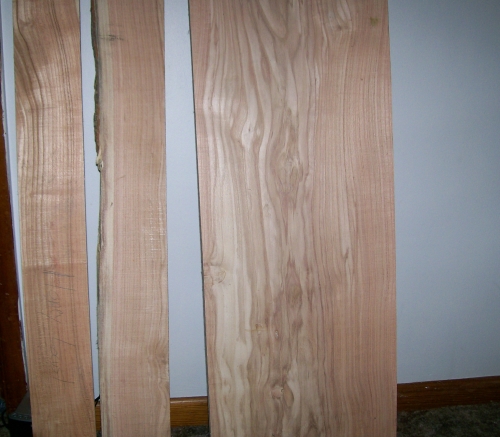Color Variations Induced by Drying Wood
A discussion of how the kiln drying process can result in a variety of wood colors. June 13, 2014
Question
Below is a picture of a dried European oak board with a strange white color in the core. It looks like a discoloration but I don't know if the discoloration is of the shell or of the core. Any idea about the origin of this problem and about what it is?

Click here for higher quality, full size image
Forum Responses
(Commercial Kiln Drying Forum)
From contributor D:
Isn't that a wet pocket?
From Gene Wengert, forum technical advisor:
Differences in drying (usually the rate, but also temperature) cause differences in color. This wood was probably air dried slowly and developed the darker color; then before the core was under 40% MC, the lumber was put into the kiln and dried quickly, so the wet core dried white in color. Wood that went into the kiln below 40% MC would already have its color predetermined.
From contributor O:
Gene, lumber under 40%, the color is pre-determined? That sounds like a pretty broad statement. Can you elaborate?
From Gene Wengert, forum technical advisor:
Basically, the color reaction (enzymatic oxidation reaction) during wood drying occurs above 40% MC, usually much higher. Once we get down to 40% MC, there is not enough moisture for the reaction to proceed very quickly or at all. (This is all in reference to oak and other dark colored hardwoods. With lighter woods, heat can substantially darken the wood below 40% MC, but such heat would darken throughout.) Under around 25% MC there is not enough moisture to support active fungal growth in most cases. However, this stain is not fungal; we can tell that because of its shape and appearance. It is not iron tannate stain either.
From the original questioner:
Gene, I had a similar thought about this problem but I canít' explain the phenomenon at all. Suppose that this board was air dried for 30 days and that in this period the outer shell dropped from 60% MC to 45% (DR of 0.5%/day), while the core dropped from 60% to 57% (0.1%/day). Then it was put into the drying kiln until an average MC of 10%. So the core has been over 40% for much more time than the shell and should be darker. Of course this is a simplification - the moisture profile indeed is more shaped. Instead, could we say that the outer shell is darker because (while the slow humidity loosing) it has been in contact with more air for more time than the core?
From contributor D:
I dried this tan oak last summer which had severe damage done by enzymes. From the end, it looked like your oak.

Click here for higher quality, full size image
From Gene Wengert, forum technical advisor:
Because the enzymatic oxidation color reaction is so complex it is not easy to simplify, but you do have the right idea. Basically, differences in drying speed and temperature cause dramatic differences in color, especially with wood that is not freshly harvested and sawn but has been stored in warm weather.
From the original questioner:
Gene, could you post any references to learn more about enzymatic oxidation? Yes Contributor D that looks to be the same problem. Do you agree Gene?
From Gene Wengert, forum technical advisor:
Contributor D is indeed correct. We see a very similar appearance in hickory too. There is an article about stain in wood that I wrote that is in the WOODWEB archives.


